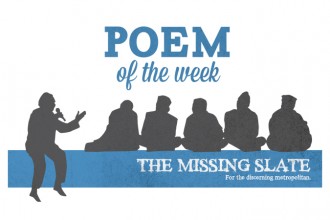By Rhea Cinna
“These images are memories of long forgotten dreams. Is this their heartbeat or ours? Will we ever be able to understand the vision of the artists across such an abyss of time?†Werner Herzog narrates, still under the deep influence of his experience inside the Chauvet Cave.
The Chauvet Cave is home to some of the earliest cave drawings ever found, dating back around 32,000 years, which were discovered by a group of 3 speleologists in 1994. The pristine condition of the cave, of the animal remains within it, and most importantly, that of the drawings, is owed to a mud slide tens of thousands of years ago that had sealed off the entrance to the cave completely, preserving its contents relatively untouched to this day. Access to the cave is forbidden to the public, but Werner Herzog, along with a minuscule crew and limited equipment was allowed entry in order to create this documentary.
Werner Herzog’s passion as a documentarist has always been apparent even in his works of fiction – it is easy to recall the sequence at the beginning of Nosferatu the Vampyre or his depiction of the Amazon in Fitzcarraldo or Aguirre, the Wrath of God, to name only a few, but at the same time, perhaps paradoxically, his documentaries seem to be the platforms where he allows his more romantic side to fully take over. Cave of Forgotten Dreams, as the title also shows, is no exception.
Seeing inside the Chauvet Cave, even by way of a television screen, carries a mysterious feeling. It’s not just the feeling of entering a real time capsule, of being one of the few to have had access to those images and experiences in tens of thousands of years, it is not even the haunting beauty of the place, which makes one understand why it had been chosen as special by the people living all those years ago. There is something about it that makes one feel as a trespasser, as if one needs to hush one’s voice and quietly allow one’s self to be absorbed in the mysticism of the moment, even as viewer in front of a television screen. It is also the way Herzog presents this place, with a sense of endless fascination and wonder that transmits his same emotions and enthusiasm past the barrier of the screen. What we are witnessing is rare and precious and we are not to forget it for an instant. The evocative music score of the film was created by Herzog’s longtime collaborator, Ernst Reijseger and enhances the sensation of mystery and wonder present throughout. One of the most endearing aspects of the film is the way Herzog’s curiosity is matched by those he interviews with an almost child-like enthusiasm that transmits to the viewer.
“For these Paleolithic painters, the play of light and shadow from their torches could possibly have looked like this.†Herzog says, casting the light from his flashlight towards the wall. “For them, the animals might have appeared moving, living.†Herzog calls this movement a form of proto-cinema, but above giving off the feeling of living animals, it almost feels as if we are looking at their primordial spirits captured within the rock.
This is not the work of a rudimentary being, the drawings and the choices for their placement within the cave suggest a craft and artistic refinement that is not traditionally associated with the beginnings of humanity. The talent of prehistoric artists survives in an unlikely legacy that puzzles and enchants to this day, but these cave paintings can also cast light on mysteries of human civilization and the circumstances of its development, as well as of the other species populating the earth at the same time. Experiencing the cave and all it has to offer can be overwhelming – one of the scientists recounted being plagued by dreams of lions after spending days in the cave – and gives way to an almost infinite number of questions, many of which we will never have a way of answering. But what a fantastic privilege it is to even be able to ask.
“In a forbidden recess of the cave there is the footprint of an 8 year old boy next to that of a wolf. Did a hungry wolf stalk the boy or did they walk together as friends? Or were their tracks made thousands of years apart? We will never know.â€
Rhea Cinna is the Senior Film Critic for The Missing Slate






